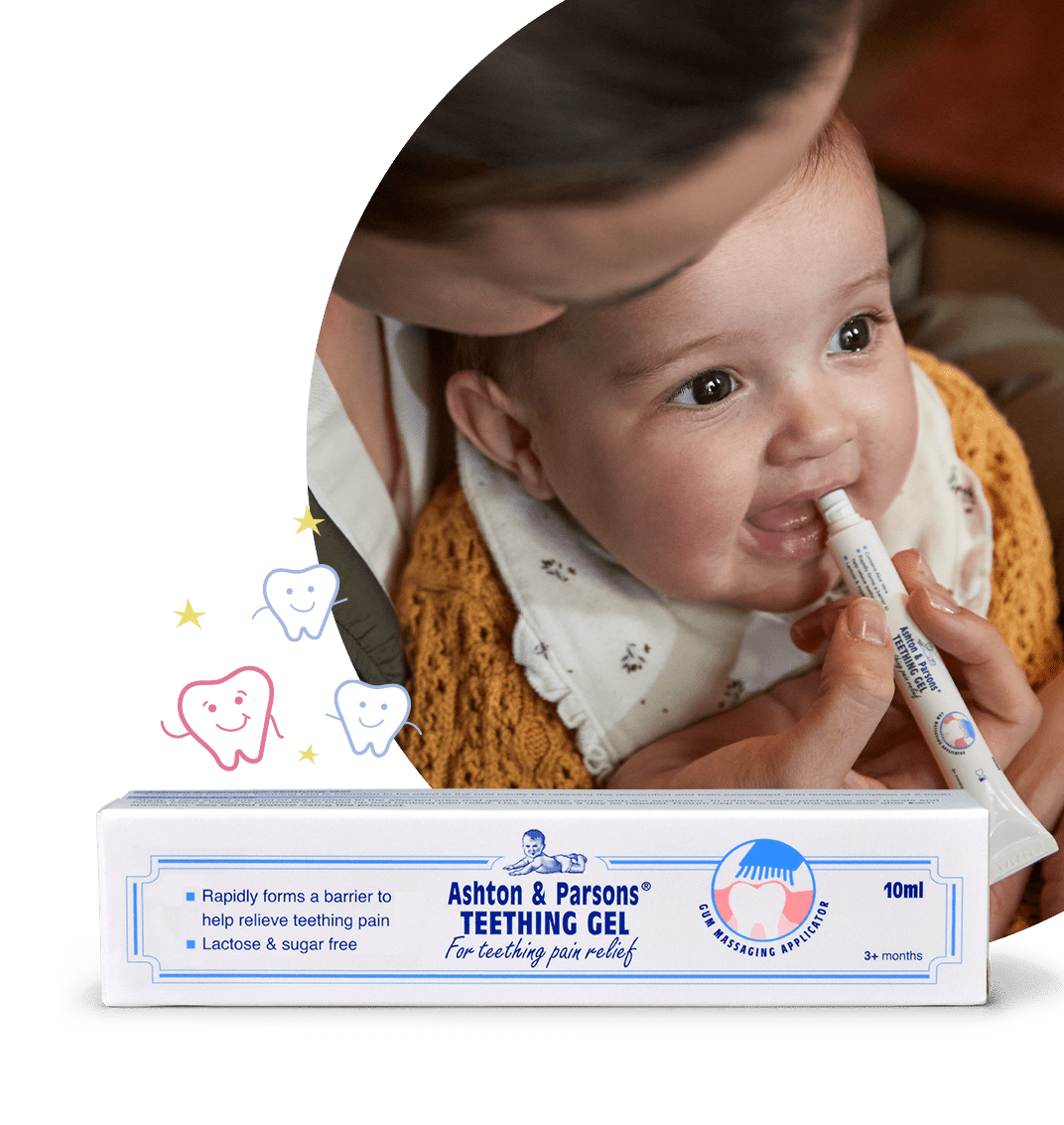Babies can begin teething at any age, but teething most commonly occurs at around 6 months old, and will continue until your infant is about 3 years. This is often a troublesome time for both babies and parents, as the process of teething can be painful and unsettling for your child. Being able to recognise the symptoms of teething will allow you to act swiftly to discover which are suitable comforts and remedies for your child. Ashton & Parsons have been used by mums and dads to soothe their baby’s teething pain for over 150 years. Here we’ve collated many of the common symptoms experienced over that time, along with some of the tried-and-tested remedies.
Behavioural symptoms of teething
Teething symptoms typically begin around 3-5 days before each tooth eruption, and it is likely you’ll spot behavioural symptoms before any visual symptoms become clear:
- Restlessness and irritability – growing new teeth can be really bothersome! If your baby is particularly restless and / or more irritable than normal this can be a sign of teething;
- Putting items in mouth / biting – putting pressure onto the sore gums can be temporarily soothing, and so teething babies may habitually gnaw on hard items to relieve their symptoms;
- Ear pulling / rubbing – this increased blood flow can reach as far as your baby’s ears, which may cause them to rub or tug at their ear lobes.
These behavioural symptoms may be a sign that little teeth are emerging. But of course, if you’re ever concerned or worried about your baby, don’t hesitate to contact a healthcare professional.
Visual symptoms of teething
All babies present symptoms differently, but it is likely that some of the above behavioural symptoms will be accompanied by visual indications that teething is taking place.
- Swollen, red and bumpy gums indicate that teeth are close to emerging;
- Flushed and rosy cheeks often accompany the advent of teeth pushing through;
- Increased drooling and dribbling regularly accompanies the arrival of new teeth as baby’s body works hard to provide natural ways of soothing gum irritability. This can also cause a chin rash, so be sure to gently wipe your baby’s chin regularly.
There are many ways to help soothe these symptoms and comfort your baby. Little can replace the healing effect of a cuddle, but you may find teething rings or chilled fruit and vegetables* can ease their discomfort. Don’t have any of these to hand? Don’t worry, there’s plenty of alternative options from everyday items you may have at home. Since 1867 parents have also been using the herbal therapeutic properties of Ashton & Parsons Teething Powders medicine, which can be administered directly from sachet onto your baby’s tongue a little at a time, allowing the powder to fully dissolve. And in 2018 we launched our award-winning Ashton & Parsons Teething Gel, a medical device which allows parents to help relieve the pain of teething by gently massaging the Teething Gel onto sore gums with a soft brush applicator.
The most important observations will be your own: what changes do you see in your baby as the teething process begins, and which treatments do you find work for both you and them? You know your baby best, but hopefully the above will give you an idea of what to look out for.
The information in this article is not for the intention to diagnose or prescribe. Please contact your healthcare professional if you have any medical concerns.
Ashton & Parsons Teething Powders are a traditional herbal medicinal product used for the symptomatic relief of teething pain and the symptoms associated with teething which are sore and tender gums, flushed cheeks and dribbling, exclusively based upon long-standing use as a traditional herbal remedy. Contains tincture of matricaria. Always read the label.
Ashton & Parsons Teething Gel is a medical device. Always remember, product should be applied by adults. Never leave a medical device in the hands of a child.
*If over six months and weaning, only with adult supervision to avoid choking.
References:
https://cks.nice.org.uk/teething#!diagnosisSub
https://www.nhs.uk/conditions/pregnancy-and-baby/teething-and-tooth-care/






